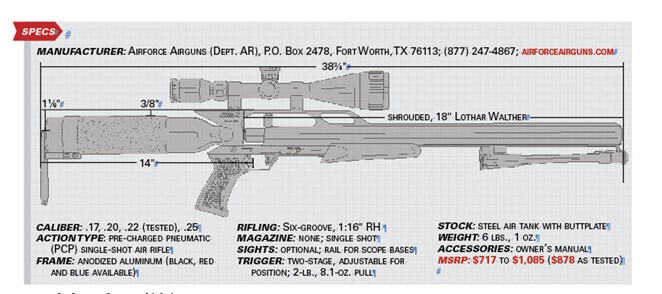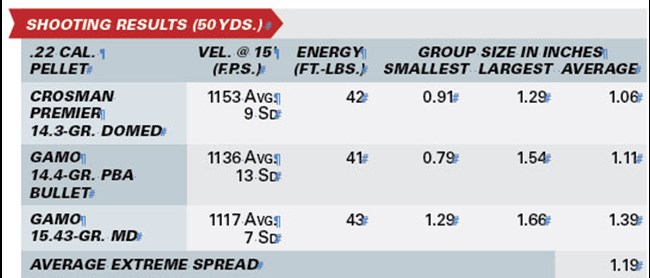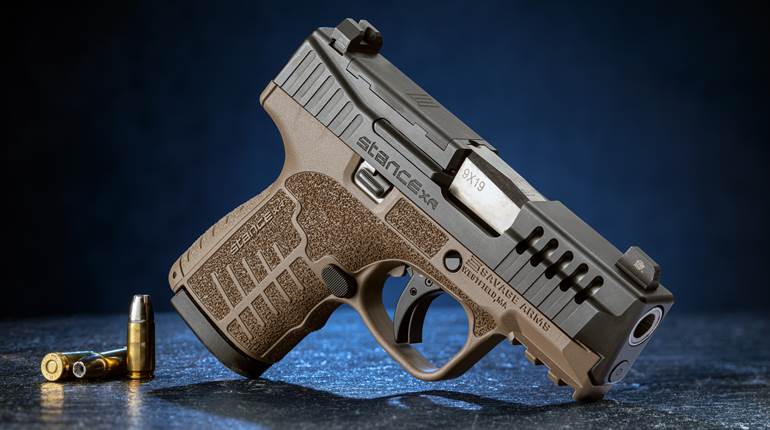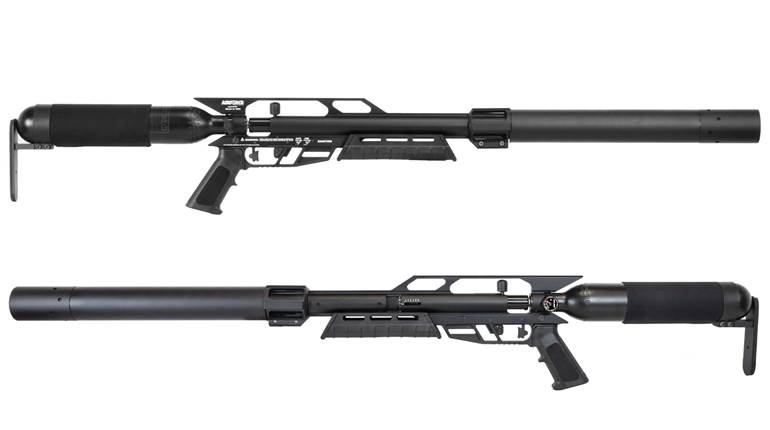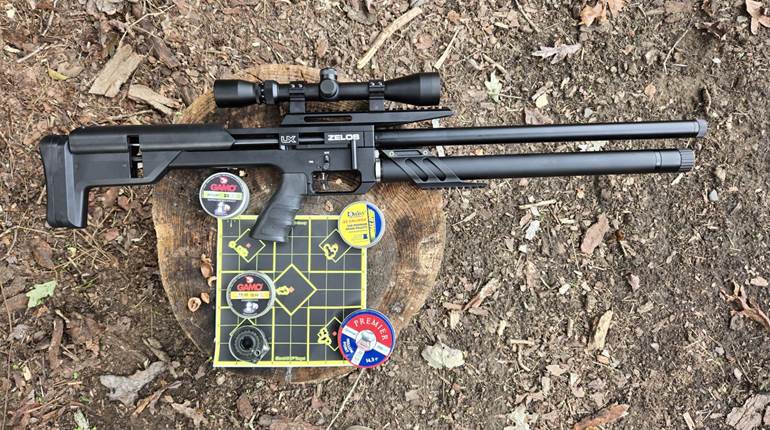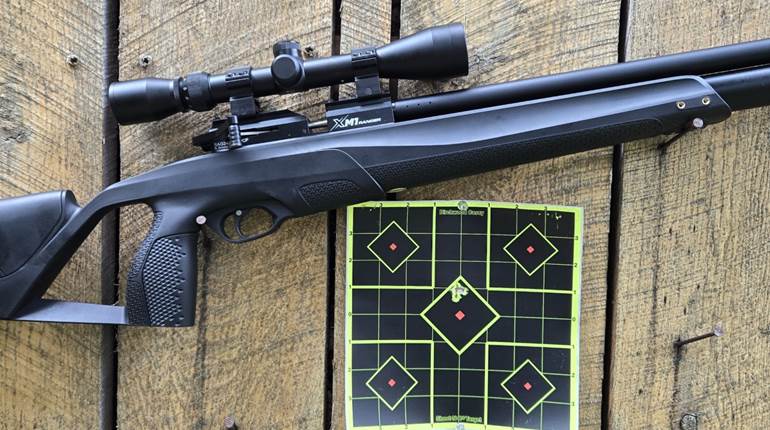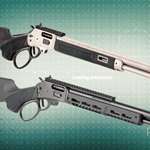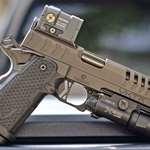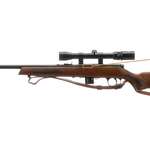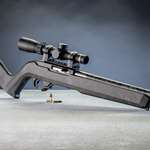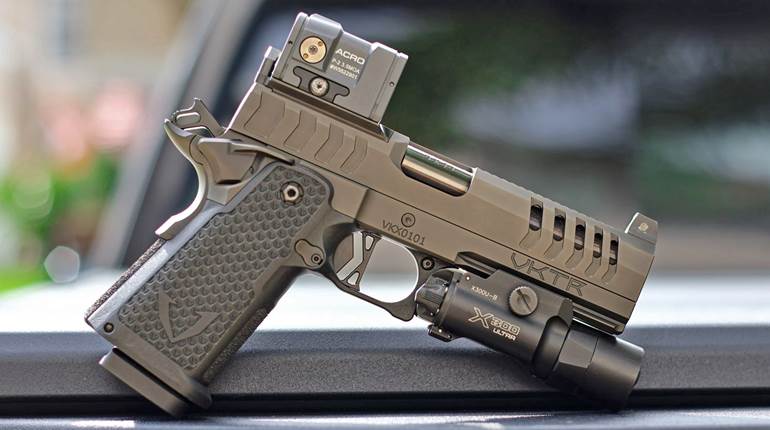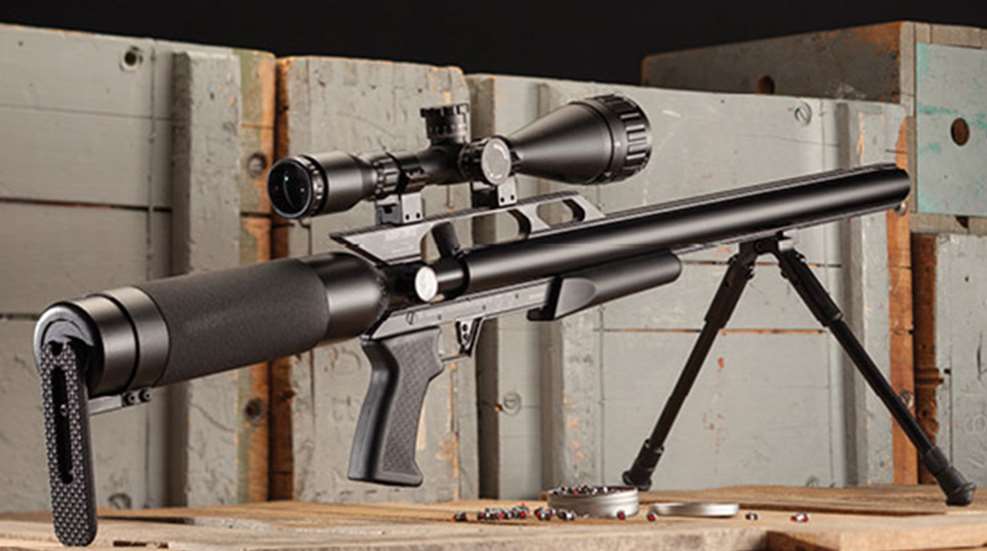
The increased cost and reduced availability of .22-cal. rimfire ammunition—Short, Long and Long Rifle—during the past few years has spurred interest in airguns. By virtue of their designs, however, many lack the rifle-like accuracy and energy levels demanded by ardent rifleman and small-game hunters. For those individuals, pre-charged pneumatic (PCP) air rifles are the best option as they offer multiple shots without breaking cheekweld, consistent metering of air/CO2 and reduced vibration (i.e. no spring movement)—all of which contribute to enhanced accuracy. Additionally, a PCP gun’s power level can be adjusted to match the shooting/hunting application. Among the standouts in the growing marketplace of PCP air rifles is AirForce Airguns’ American-made Condor SS, which is evaluated here.
As with its counterparts and predecessor, the Condor SS is powered by a 490-cc., 3,000-p.s.i.-rated tank that is secured using one of two attachment systems. Coined “Quick Detach,” this is the least costly option, and permits easy removal from the rifle for charging. The second option, which is called “Spin-Loc,” effectively locks the tank in place; however, the tank has a refill fitting on the side opposite of the pressure gauge. As such, the Quick-Detach version is easily filled using the AirForce Airguns hand pump, which can be purchased separately or is included in some kits, as well as a scuba tank. Because of the Spin-Loc system’s design, it is most easily charged using the hand pump. Worthy of note is that the tank itself serves as the buttstock, and as metal is uncomfortable in cold conditions and slippery when wet (i.e. perspiration), the company had the foresight to use a 5½"-long band of textured synthetic material to cover it. Moreover, there is a slight recoil pad that extends rearward of the tank and, because of its design, permits it to be canted.
On the left side of the shrouded barrel is found the numbered (from “1” to “16½”) power adjustment wheel, as well as the power scale, which is numbered from “1” to “13.” Rotating the wheel upward increases the amount of pressurized air released to propel the pellet, whereas turning it in a downward motion reduces the volume of gas. Although the power adjustment wheel and power scale are numbered, the owner’s manual states, “Power does not adjust evenly as the numbers increase or decrease. Rather, there are zones at which the power level settles into a velocity range.” It is recommended that a chronograph be used to determine the optimal velocity for a given pellet. As for power levels, AirForce Airguns recommends “3” and “4” for general target shooting and “6” for general shooting. Nos. “9” and “10” are the highest settings at which air isn’t wasted. Depending on the setting, one can expect to get 35 to more than 200 shots before the velocity noticeably drops off.
Unlike its predecessor, the Condor, and following suit with the Talon SS, the Condor SS’s German-made, steel 18" Lothar Walther barrel is contained within an aluminum shroud—itself integral to the aluminum frame of the air rifle—that incorporates the company’s Sound-Loc noise-reduction technology. Similar to firearm suppressors, Sound-Loc utilizes a series of baffles to decelerate air velocity and thus reduce report. That is noteworthy because, depending on caliber, power setting and pellet weight, the Condor SS will attain upward of 1300 f.p.s., which is supersonic. The shroud measures 1.258" in diameter and features an integral accessory rail on the bottom for attachment of a bipod (included in the kits) and a topside rail that is stepped up at the power adjust wheel and continues at that height rearward until reaching the tank. It is in this portion that scope bases or a riser (and then scope bases) are added. There are no sights.
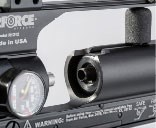 Below the optics rail is the loading port. To load the gun, insert a single pellet directly into the breech, and then, the ambidextrous bolt handle can be slid rearward almost effortlessly until it tracks either left or right and completes lockup. It is worthy of note that, once the bolt is pushed forward, such as after firing, the safety automatically engages. To fire, the user pushes the safety, located at the front of the trigger guard, and then presses the trigger, which enables the sear to strike a valve and release air into the barrel. The two-stage trigger has a wide, grooved shoe for maximum purchase and leverage, and is user-adjustable for position. According to a Lyman Digital Trigger Gauge, the test rifle’s trigger broke cleanly at 2 lbs., 8.1 ozs. Given the trigger’s close proximity to the textured pistol grip, even shooters with small hands should have no difficulty reaching it.
Below the optics rail is the loading port. To load the gun, insert a single pellet directly into the breech, and then, the ambidextrous bolt handle can be slid rearward almost effortlessly until it tracks either left or right and completes lockup. It is worthy of note that, once the bolt is pushed forward, such as after firing, the safety automatically engages. To fire, the user pushes the safety, located at the front of the trigger guard, and then presses the trigger, which enables the sear to strike a valve and release air into the barrel. The two-stage trigger has a wide, grooved shoe for maximum purchase and leverage, and is user-adjustable for position. According to a Lyman Digital Trigger Gauge, the test rifle’s trigger broke cleanly at 2 lbs., 8.1 ozs. Given the trigger’s close proximity to the textured pistol grip, even shooters with small hands should have no difficulty reaching it.
We tested a .22-cal. Condor SS kit, which included, among other things, a 4-16X 50 mm airgun-specific optic, 1" high rings and a bipod. We used the “9” setting for testing both accuracy and velocity. The air rifle was fired from a Caldwell Tack Driver bag rest at 50 yds. using three types of pellets: Crosman Premier 14.3-gr. domed; Gamo’s lead-free 14.4-gr. Performance Ballistic Alloy; and the Gamo Match Diablo 15.43-gr. Of the pellets, the most accurate proved to be the Crosman Premier, which averaged 1.06" for five consecutive, five-shot groups. Second most accurate was Gamo’s PBA Bullet, which averaged 1.11". Worthy of note is the PBA Bullet’s inconsistent fit; some were difficult to load, while others were considerably undersized. No doubt this negatively affected what likely would have been the most accurate pellet in the mix.
No malfunctions were encountered during testing. The tank had to be recharged four times, which, using the hand pump, took 15 minutes to fully charge. Given this, it would be prudent to set the power level to that necessary for the task at hand and nothing more. Additionally, after each 10-shot string for chronographing, the tank was recharged for maximum velocity.
Airforce Airguns are by no means inexpensive; in fact, at $878 (as tested), the Condor SS is considerably more expensive than many .22 rimfire rifles. The Condor SS air rifles—available in .17, .20, .22 and .25 cal., as well as black, red and blue anodizing—begin at $717 (Quick Detach) and packages (including the pump) top out at $1,085.
Given the scarcity and increased cost of rimfire ammunition, though, and with pellets costing as little as two cents each, AirForce airguns afford a lot of shooting for the dollar. In addition, they exhibit ample accuracy and punch for the ardent shooter and small-game hunter, respectively, so their initial price could be considered money well spent.
